Planting the Seeds of Your Spring Garden in Japan
How to Prep Your Tokyo Balcony Oasis
It’s never too early to start organizing and planting seeds for a vibrant balcony garden come spring. No urban patio is too small to house an array of seasonal flowers and plants that flourish in the colder months and can bring some green into your life.
In the traditional Japanese calendar, the 15 days following Jan. 20 are deemed the coldest time of the year, the last and most harsh period of winter: daikan (period of extreme cold). Yet, within this chill are slivers of botanical awakenings: the daffodils start to bloom and in Western Japan, plum blossoms begin to adorn the trees.
Indeed, late winter is a great time to put extra effort into your balcony garden! When I spent my first winter in Japan, I was amazed by the flowers and plants which weather the cold and keep gardens and parks alive-looking even on the chilliest days. I soon learned that, unlike my native Canada, I could cultivate a garden year-round if I rotated plants seasonally. In this time of year, there are two main jobs to be done: choosing and planting seeds indoors for eventual transplanting in spring and keeping your balcony green and flowery with seasonal favorites.
Planting Seeds for Spring
Choosing and planting seeds is an exciting project for our family. Everyone has an opinion about what should have a place of honor on our small balcony. We procure our seeds in three ways. First, my eldest daughter has been putting aside fruit and vegetable seeds for the last little while, especially sweet mikan and juicy lemons, that we will try to sprout. We also have a stash of seeds from last year’s most successful plants. And, there is always much joy in buying seeds at the nearest home center (more on this below).
Early February is largely our planning stage and mid-February is when we start planting seedlings indoors, but of course, this depends on where you live in Japan. First, buy seedling pots (or a kit) and fill them with seed starting soil (we purchased ours on Amazon). If you want to avoid plastic, you can make your own pots using paper towels or toilet paper tubes, newspaper or yogurt cups to achieve the desired small pots for your seeds. Then, evenly distribute a few of your chosen seeds into the pots (not all of the seeds may germinate). If the seeds are too small, metal tweezers can help pick them up carefully. For kids, aim for bigger seeds, like sunflowers or beans, which are easier to handle. Don’t put them too deeply under the soil or they won’t receive enough sunlight. A light covering of soil is perfect. The seeds also need to be warm so place them in a place with lots of sunlight.
If you purchase a seed starting kit, it will also come with a base tray (which is also useful to catch soil, so it doesn’t end up all over your floor). Make sure that your seeds are well-labeled or you will end up with a lot of confusion when the little sprouts come out! We wrote on popsicle sticks, but again, the kits will make your life easier. Once your seeds are in, use a small spray bottle to give a dousing of water (it’s best to keep them well moistened until they germinate). Finally, after all your tender love and care, just sit back and wait for the magic to happen!
Curating Your Late Winter Garden
While you await your seedlings’ outdoor debut, why not create a late winter and early spring garden? One flower to brighten up your balcony is an anemone, which usually blossoms between February and May. Available in a wide array of bright colors, these are a common fixture in park gardens this time of year. Another favorite of mine is the delicate Christmas Rose, which blooms between January and March. In pots, daisies and pansies of varying colors also survive nicely outside in the winter, especially in slightly warmer parts of Japan.
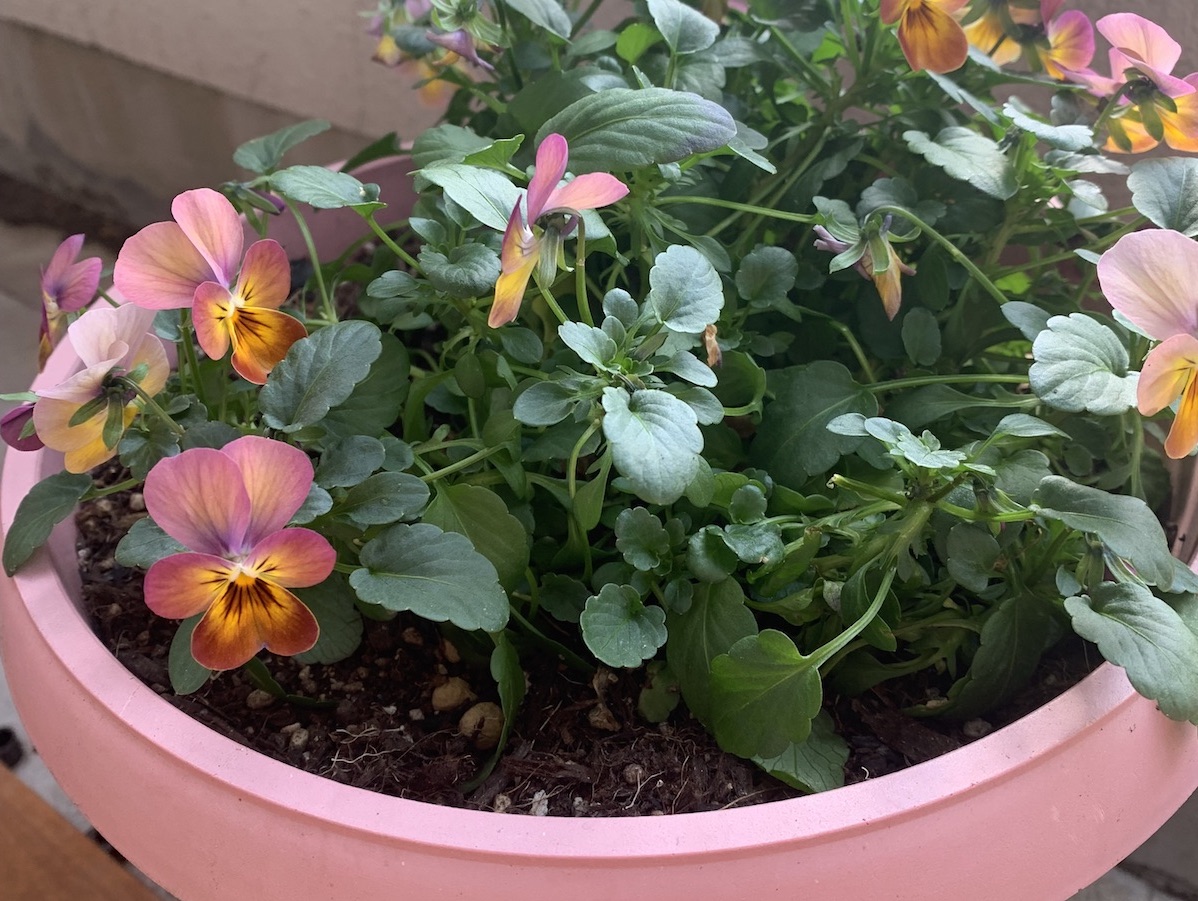 © Photo by Elizabeth Sok
© Photo by Elizabeth SokMy eldest daughter was drawn to the bright pink and yellow of these pansies.
For leafy plants, I suggest herbs for functionality as well as beauty! I’ve had good luck with lavender, rosemary, parsley and sage over the winter that have both decorated our balcony and found their way into sauces, cookies and stews in the colder seasons.
Where to Buy Gardening Gear
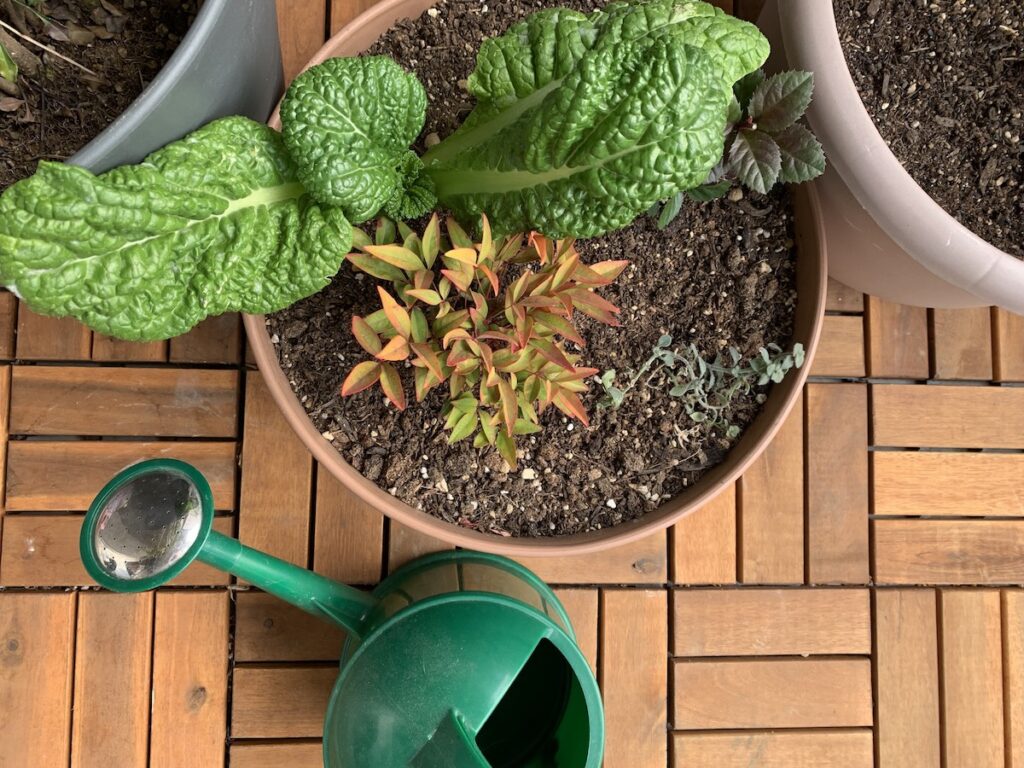 © Photo by Elizabeth Sok
© Photo by Elizabeth Sok
So, where should you go to purchase your early spring gardening goods? I think your best bet are the home centers, like GooDay and Nafco (Japanese). Not only have I had the best experience with their seeds and young plants (read: they don’t die in the first week home), but their prices are also the cheapest, often for as little as ¥300 for a small plant! If you want something different as well, these centers are your friend; last summer, I could choose from no fewer than 12 varieties of blueberry plants! This is also a great place to buy earth, although if you order online, you can get out of lugging it all the way home without a car!
Planters or pots, however, come with a price tag here so I tend to purchase mine at Daiso, Seria or another 100-yen shop. They often have a series of planters that match—much appreciated—but make sure the pots seem to have good drainage. While you’re at the 100 yen store, you can pick up some basic gardening gear, like gloves, a trowel and a watering can, if you aren’t stocked up.
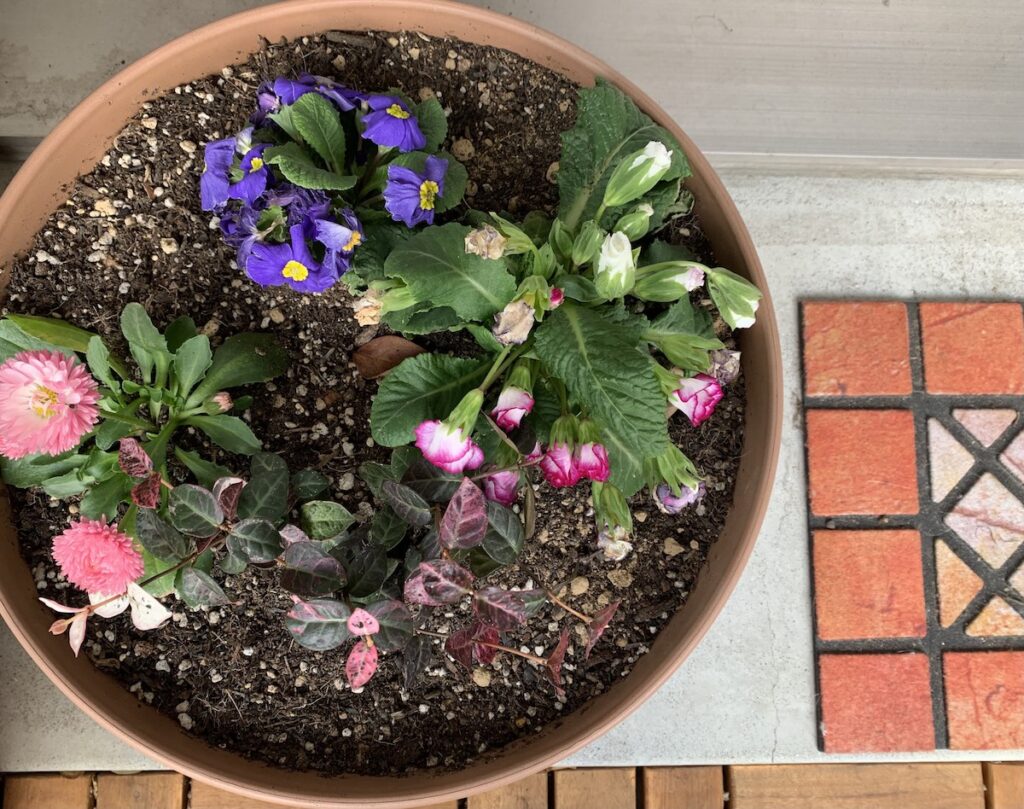 © Photo by Elizabeth Sok
© Photo by Elizabeth Sok
So, whether you’re just cultivating your green thumb or a seasoned gardener, get your hands dirty in the late winter and early spring to enjoy botanical pleasures all year round!

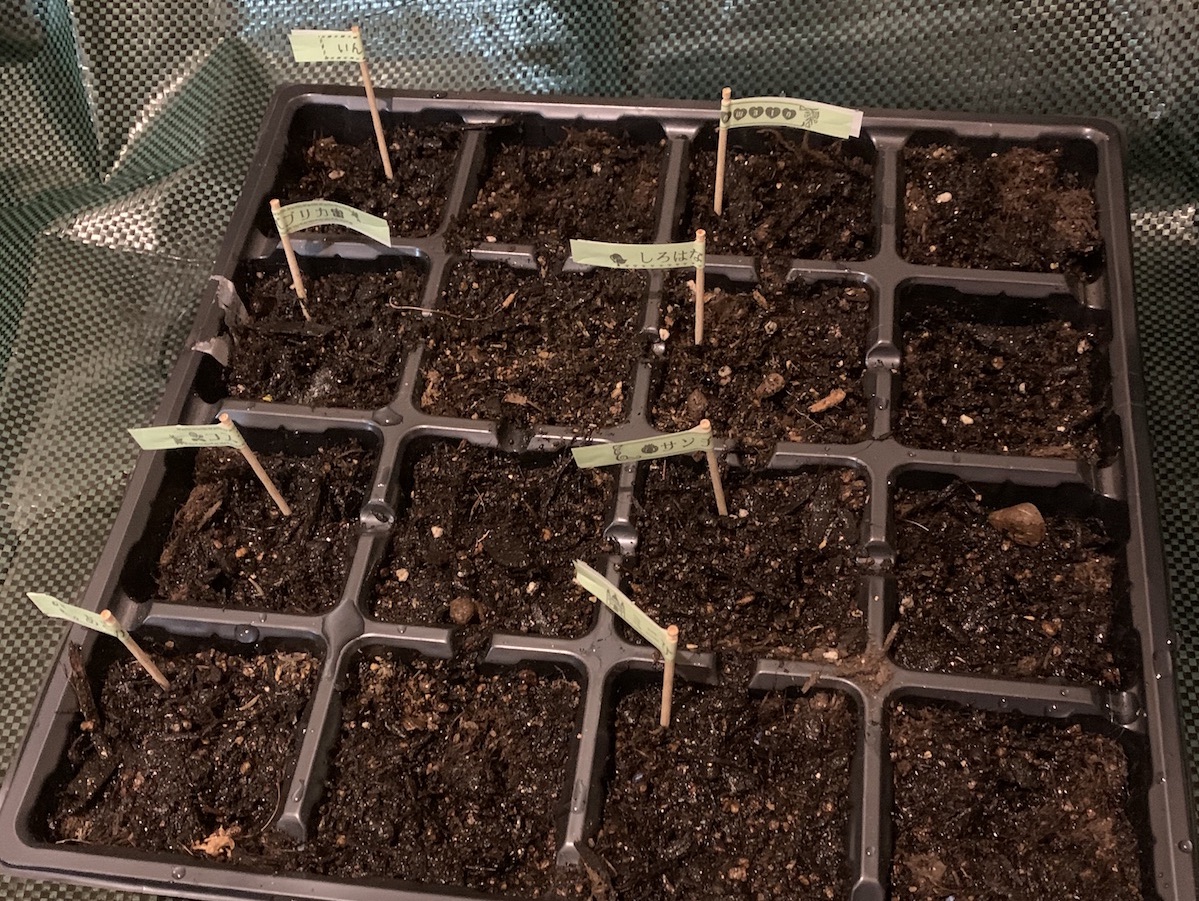
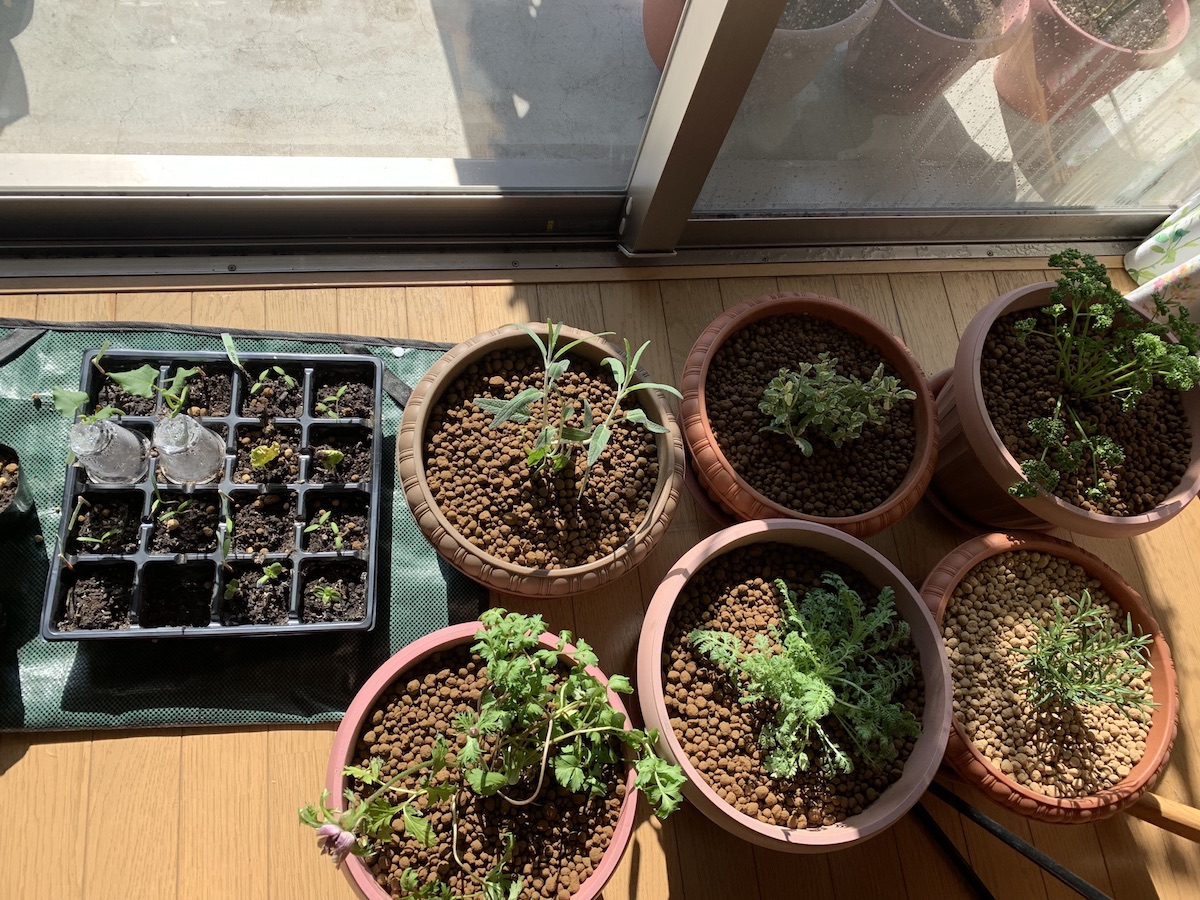
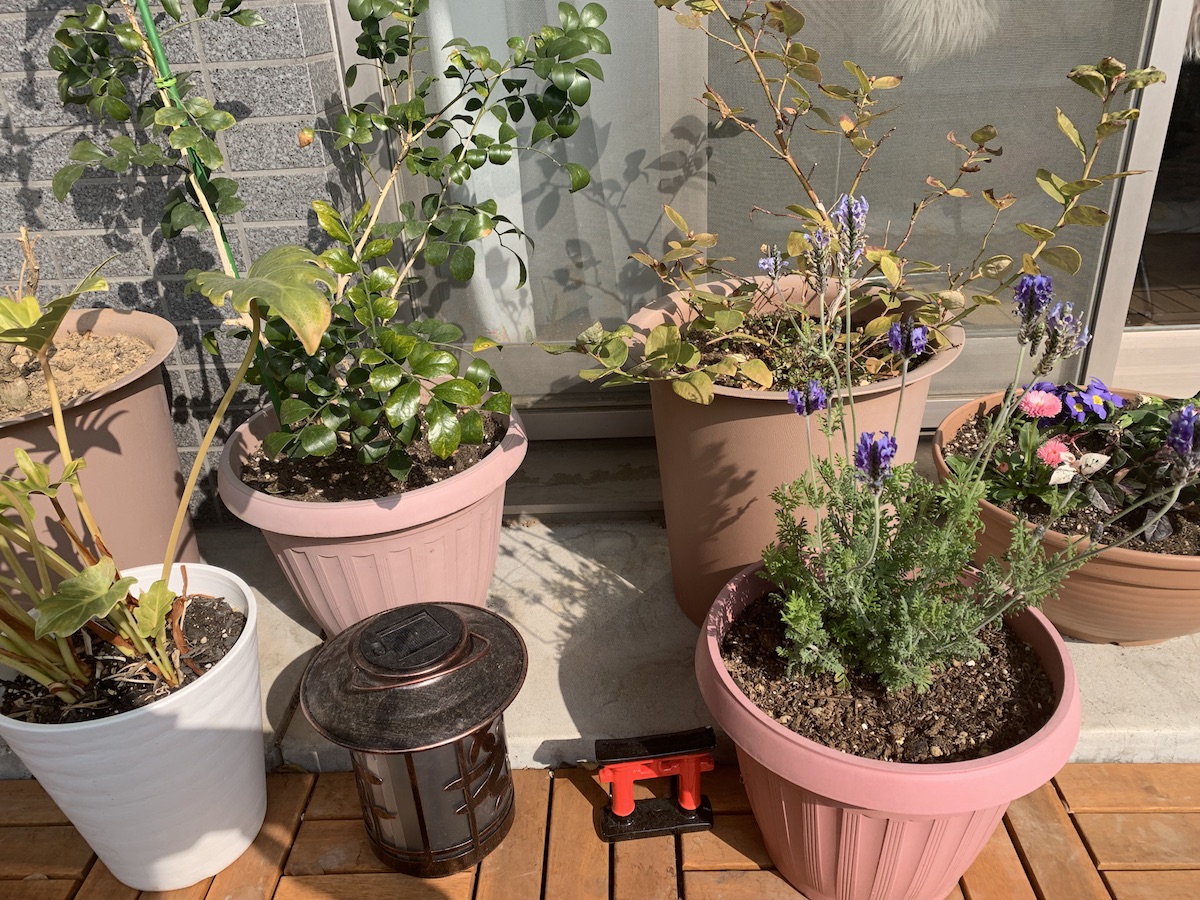












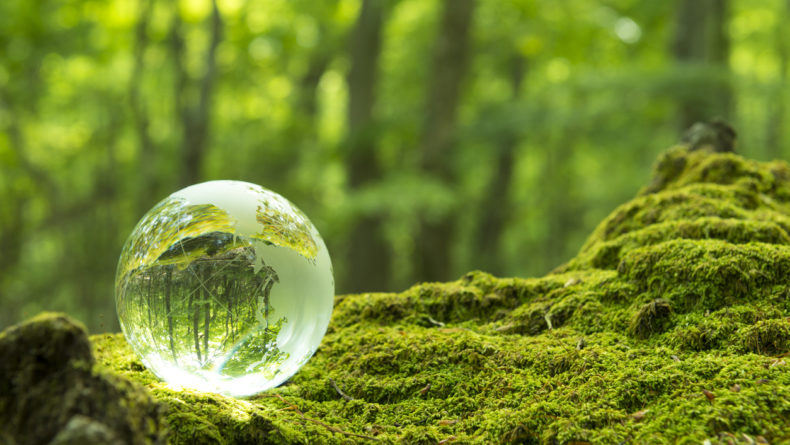
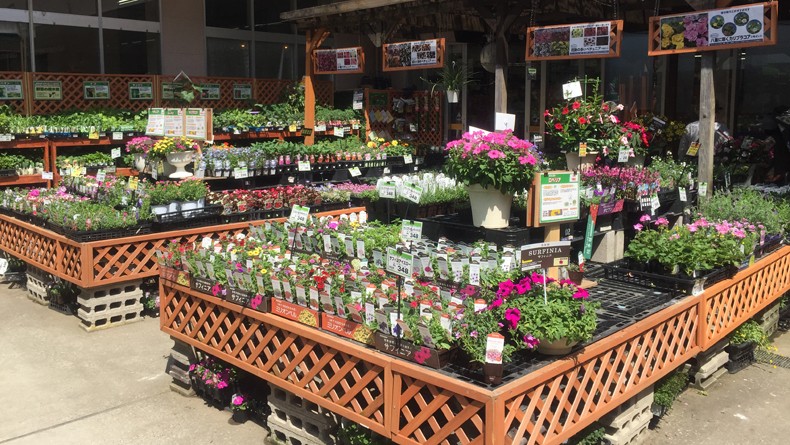

Leave a Reply